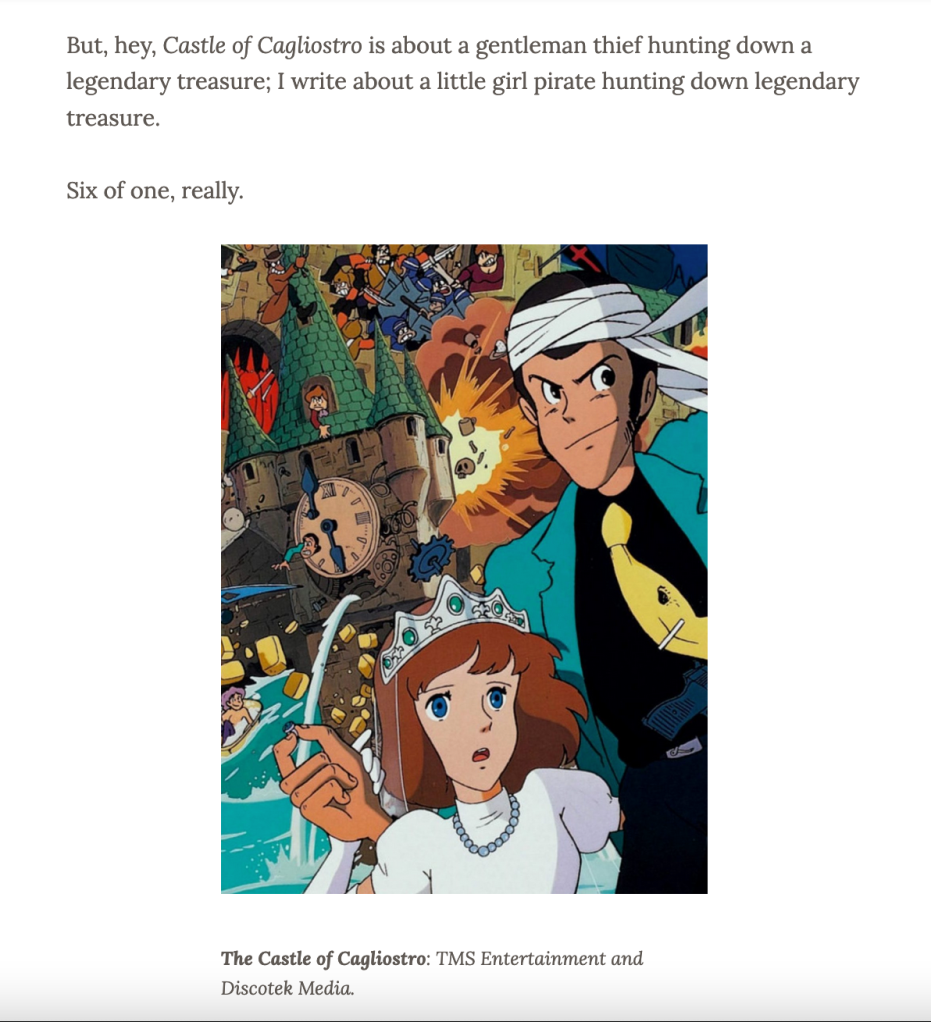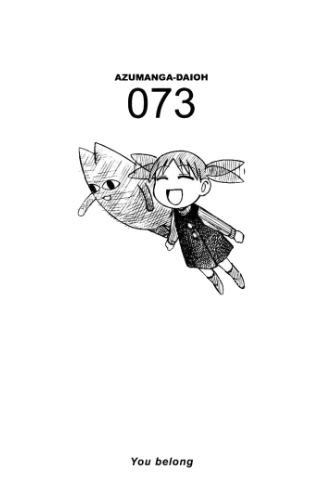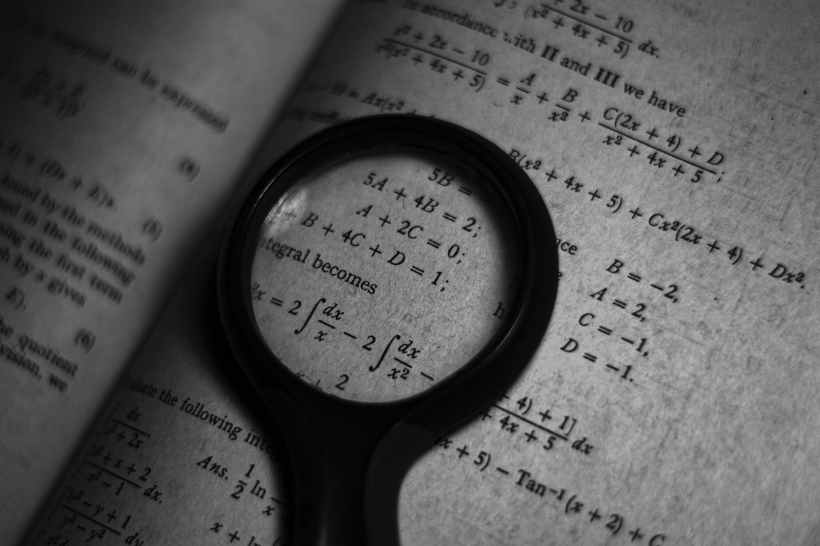Now, April 2 has been Autism Awareness Day since 2007. From there, April has been adopted as Autism Awareness month.
And, well…

Teenage Mutant Ninja Turtles 1987: Fred Wolf Films.
Image via Turtlepedia.
So, uh, consider yourself aware, I guess.
Basically, my plan here today is to repost my recommendation of Azumanga Daioh, largely because that recommendation is one of the most meaningful, personal things I’ve ever written, largely because Azumanga Daioh is a triumph of autistic representation — something of which there is a decided dearth of in Pop Culture…
Now, notwithstanding my recommendation of The Castle of Cagliostro, all of my previous recommendations have been Fantasy-y, or at least Fantasy-adjacent. And even Castle of Cagliostro managed to be at least thematically Realmgard-adjacent:

And, yeah, despite being one of my favourite animes ever, Azumanga Daioh doesn’t even have that sort of tenuous connection to justify a description of “Realmgard-esque” or “Realmgard-adjacent.” And no, Azumanga Daioh is not Realmgard-adjacent. But it is at least Greatest Living Author J.B. Norman-adjacent.
Look, there’s no good way to announce this subtly or euphemistically, so let me just tear off the proverbial band-aid:
I’m autistic.

I’ll get into more detail about that in the back half of this post, but addressing it now will establish some pretty important context.
Part 1: “Goodbye, sadness.”
If the “Azumanga Daioh” name sounds at all familiar to you, it may be because it’s the origin of the “waifu” meme that has become rather ubiquitous on the Internet — particularly where anime and video games are concerned.

Azumanga Daioh the Animation: J.C.Staff and Sentai Filmworks.
In fact, Azumanga Daioh has proven to be something of a powerhouse where Internet memes are concerned. That’s hardly shocking; the series has some very memorable scenes, easily-quotable characters, and a pretty ludicrous sense of humour.
The plot, such as it is, revolves around a group of six main girls in the same high school class:

Azumanga Daioh the Animation: J.C.Staff and Sentai Filmworks.
- Chiyo, probably the closest there is to a main character, a child genius not unlike our own Annie Darkstone and skipped ahead all the way to high school despite being a mere ten years old.
- Sakaki, probably the second most prominent character, who is tall, strong, and outwardly stoic and collected, but inwardly obsessed with small, cute things, prone to ridiculous flights of fancy, and probably the biggest softie out of all the characters.
- Osaka — spoiler: her real name is Ayumu; second spoiler: she’s the autistic one, not unlike our own Annie Darkstone. She’s proven hugely popular on the Internet, and usually flighty and just plain weird, but also possessing several very particular talents and capable of insights that all the other girls miss.
- Longtime best friends and total opposites Tomo — rash, hyperactive, and rather self-absorbed, and Yomi — serious, uptight, and usually the one responsible for reining in Tomo.
- Kagura, Sakaki’s hotblooded self-appointed athletic rival is a later addition to the group, added to the class by their teacher to serve as a ringer for the school’s Sports Festivals.
- Also Kaorin, a girl with an obsessive crush on Sakaki who’s largely a periphery character to the main girls, but does get the spotlight every now and then.

Azumanga Daioh the Animation: J.C.Staff and Sentai Filmworks.
Notably, Wikipedia categorises Azumanga Daioh as both a “Slice of Life Anime and Manga” and a “Surreal Comedy Anime and Manga.”
And, yeah, as weird as it seems, that’s fair.
“Cute (usually female) characters doing cute things cutely” is basically an anime genre unto itself. I doubt that Azumanga Daioh was the first anime (technically, manga first) to do it, but there do seem to have been a lot of Azumanga Daioh-esque animes and mangas since then.
But maybe that’s just because a high school class is fruitful ground for stories in the genre, rather than any direct influence…
Beyond the “cute characters being cute”, it’s fundamentally about a group of high school girls doing high school girl things, with occasional asides featuring their teachers being nominal adults and trying (and usually failing) to do mature, adultful things.

Azumanga Daioh the Animation: J.C.Staff and Sentai Filmworks.
It doesn’t even really have a plot or an all-encompassing story arc. It plays out (especially in the manga) as a series of short, loosely-connected vignettes, rather than a story unfolding episodically.
Comparisons have been made to Seinfeld. Never having really got into Seinfeld, I can’t really comment.

Azumanga Daioh the Animation: J.C.Staff and Sentai Filmworks.
Now, plenty of the episodes do have an overall theme — things like “Culture Festival” (I wish we had those in Canadian high school), or “Sports Festival” (I don’t wish we had those in Canadian high school), or “Summer Vacation“, or “School Trip to Okinawa“
Basically, it’s the humour of everyday life. Helped in large part of the main group of girls having such good chemistry together and most of them being prone to pretty funny comments or actions.
There’s also a lot of really, really weird stuff that goes down. Now, most of this is consigned to the girls’ day dreams, regular dreams, or imagine spots, rather than anything really fantastical happening in the real world.
Yet multiple characters somehow all imagine Chiyo’s father as the same weird orange cat-looking… thing…

Azumanga Daioh the Animation: J.C.Staff and Sentai Filmworks.
It’s, uh, it’s a long story.
Also, there’s a not-insubstantial amount of just plain old slapstick comedy, with the characters getting hurt in inventive and funny ways.

Azumanga Daioh the Animation: J.C.Staff and Sentai Filmworks.
I first watched Azumanga Daioh when I was myself in high school. I’ve since re-watched in recently (via Sentai Filmworks‘ HIDIVE streaming service) now when I’m into my 30s as far as your concerned 25 (and always will be).
Man, it’s scary having to admit that…
That basically means I’m now closer in age to the girls’ teachers than to the girls themselves.
And as a consequence of that, the girls’ two main teachers, Yukari, and Nyamo (that’s a nickname but is what she’s mostly commonly called; her real name is Minamo), have become a lot more relatable to me now than when I first watched Azumanga Daioh.

Azumanga Daioh the Animation: J.C.Staff and Sentai Filmworks.
Yukari and Nyamo basically have an ‘Adult Tomo and Yomi’ dynamic going on. Nyamo’s the responsible, composed one (but, uh, not so much after she’s been drinking…) and Yukari’s the brash, loud, self-centred one.
Now, Yukari’s not exactly what you’d call an accurate depiction of a high school teacher, given that she’s probably done enough to get herself fired at least once an episode.
Mostly, her profession as the girls’ teacher consists largely of her being a jerk to her students.

Azumanga Daioh the Animation: J.C.Staff and Sentai Filmworks.
It’s a lighthearted show and an easy watch with very little objectionable content.
There’s some suggestive conversation every now and then. And’s Mr. Kimura’s whole “I like high school girls!” schtick is inevitably going to offend somebody. That being said, when he’s just being weird rather than creepy, he’s actually a pretty funny character…
Azumanga Daioh is genuinely hilarious. It’s almost relentlessly positive. It’s sincerely uplifting. It’s got a great artstyle that allows for the characters to utilise some great poses and expressions.
There’s a big, orange cat-looking… thing.
It’s a very welcome change of pace from how incessantly grim a lot of modern Pop Culture is.
Plus, it has autistic characters that don’t make me want to pull out my hair in frustration. And that will be what I focus on in the second half of my manifesto.
Which we’ll get to right now.
Part 2: “You Belong.”
To recap: Azumanga Daioh: good, J.B. Norman: autistic, Azumanga Daioh: good at autism.
Because, yeah, it’s clear that all the main characters have found somewhere they well and truly belong. And that’s an important lesson for autistic kids. I mean, hey, that’s an important lesson for autistic adults.
It’s a lesson that a lot of Pop Culture abjectly fails at taking into consideration, given that what most Pop Culture depictions seem to be telling autistic people is “You’re a freak and a robot who deserves to be laughed at.”

Photo by Kindel Media on Pexels.com
Look, it’s not a contest.
I’m fully aware that plenty of other groups also have issues with how they’re depicted in Pop Culture, probably even worse than autistic people have it.
Pop Culture autism is just the most obvious, and frustrating, thing to me.
For obvious reasons.
Which brings me back to Osaka.

Image by 663highland. via Wikimedia Commons.
Used under Creative Commons Attribution-Share Alike 3.0 Unported Licence.

Azumanga Daioh the Animation: J.C.Staff and Sentai Filmworks.
Now, I’m clearly not alone in reading Osaka as autistic. It pops up pretty frequently in online discussions of the character.
It’s proven to be a shockingly controversial statement, though. Some people clearly have a very visceral reaction to suggestions that she’s autistic. Because she couldn’t possibly be autistic.
Most of the arguments boil down to “She has too many friends! She can’t be autistic!” or “She’s not disabled enough! She can’t be autistic!”
God forbid an autistic person should be well-adjusted, apparently.
Which is, yeah, not a great look.
For what’s it worth, the manga version of Azumanga Daioh began publication in 1999, and I have no idea what the status of autism diagnoses was, or even how much widespread awareness of autism in general there was in Japan at the time.
I have no way of even knowing making her autistic or autistic-adjacent was eve intentional on writer Kiyohiko Azuma‘s part.
It certainly says something about the state of Pop Culture autism, given that one of (or two of; more on that later) the most genuinely positive, uplifting, encouraging depictions of an autistic character may have been written as well as she was with no deliberate effort on the author’s part.
Honestly, I’m not sure how much it matters if Osaka is psychoanalytically accurate.
I kinda hate the whole “Death of the Author” thing, but I will admit that there is something to the idea that readers will form their own conclusions about characters regardless of authorial intent.
So, I guess what I’m trying to say is that Osaka is enough like me — and people like me — that I can look at her and think “Hey! She’s like me!” and then see that she has hopes and dreams and is a fundamentally likeable character who is loved and cherished by her friends and then think “She is living her best life! I want to be like her!”
Which is basically the exact opposite reaction I have to most other autistic characters.

Azumanga Daioh the Animation: J.C.Staff and Sentai Filmworks.
Except maybe Abed…
And, yeah, Osaka is definitely like me. I’m basically going to be citing the, uh, tropes (sidebar: I hate the word ‘trope’) discussed on the TV Tropes Azumanga Daioh character page‘s section about Osaka, which notes that she:
- “displays sensory sensitivities”, both pro and con; yup.
I don’t like big noises or most smells, and I love feeling walls.

Photo by Miguel u00c1. Padriu00f1u00e1n on Pexels.com
- “repeats phrases she likes”; yup.
I spend a good chunk of most nights wandering through my house reciting Théoden’s war speeches from Lord of the Rings. - “infodumps without regard for appropriateness”; now, this mostly comes down what “appropriateness” means in this context.
I’d like to think I have enough knack not to explain at length the bio-mechanics of how a shark bites a seal in half to the church Old Ladies’ Tea Group (basically, by biting really hard), but if we’re talking about, like, derailing a conversation to tell you about Vikings, man, let me tell you about Vikings.

And then feel the walls of that Viking boathouse…
Photo by Erik Mclean on Pexels.com
- “has odd but deep interests”; see above.
Also, wondering how angels wear shirts. - “displays an unconventional perception of language (shown by her knack with wordplay & subtleties in Kanji, as well as her occasional struggles with distinguishing similar verbal concepts).”
Now, this one isn’t necessarily a one-to-one thing, or an inevitable trait of autism, and does mostly tie into the “odd but deep interests” thing.
But, for what it’s worth, I am a writer and editor, after all. Also, I love etymologies. Like, for example, that ‘admiral‘ is from the Arabic for ’emir of the sea’. - “tends to catastrophize”; yup.
I once had to fly out to visit some family friends and couldn’t sleep for the entire week leading up to it because there was a non-zero chance the plane could crash. Spoiler: it didn’t… - “approaches basic tasks in out-of-the-box and oftentimes counterintuitive ways”; yup.
In my Grade Six math class, we were assigned 100 math equations for homework once. I did them out of order because it felt less tedious than doing them 1-100. As a consequence, my homework buddy couldn’t check my answers because he couldn’t keep track of them.
All in all, yeah, pretty consistent with at least one real-life autistic person…

Interestingly, Osaka is also basically portrayed as the ‘dumb’ one of the group, a decided change of pace from the usual “autism, therefore genius” idea — the indisputable genius of the cast is Chiyo, and there’s no suggestion that she’s anything other than just really, really smart.
But, really, just writing Osaka off as ‘dumb’ is an oversimplification. She isn’t necessarily stupid by nature, she’s just easily distracted, prone to reverie, and ill-suited to the school environment. I’m sure there are plenty of students, teachers, and parents who will point out that those are not the same thing as being stupid.
Fundamentally, she approaches problems with methods other than those prescribed by the system, which the system (especially in terms of education) generally frowns upon.
Again, that’s consistent with my own real-world experience. And, it’s worth noting that when she gets the motivation to apply herself towards the end of the series, she puts in the work to pass her college entrance exam. Granted, it takes her two tries, but as I understand it, Japanese entrance exams aren’t easy and even the average student may need multiple attempts.
And then there’s Sakaki.

Azumanga Daioh the Animation: J.C.Staff and Sentai Filmworks.
In some ways, Sakaki is even more representative of my own experiences with autism than Osaka is.
For one thing Osaka talks a lot, while Sakaki barely talks at all. Now, I have met autistic people like Osaka and like Sakaki that way, but I’m definitely the latter (96th percentile social anxiety, and all).
Turning back to TV Tropes, we see Sakaki described as “painfully shy and withdrawn”, and “loves cute things and would like to have more friends.”
So, she’s not so much antisocial as merely bad at socialising. She doesn’t know how to approach people, so she comes off as prickly and unapproachable (which I can 1200% relate to), exacerbated by the fact that she is massive for a Japanese teenager and an athletic superstar (which I cannot relate to).
Inwardly, Sakaki is obsessed with small, cute things, turns into a complete dope around Chiyo’s dog (who, to be fair, is established to be a ‘man of character’), thinks up ridiculous backstories for her stuffed animals — in the episode where Tomo play-acts an epic fight with two stuffed animals during step-up for the Culture Fest, Sakaki’s response is to draw a background for them.

Azumanga Daioh the Animation: J.C.Staff and Sentai Filmworks.
I can’t find the page where I found the direct quote in the first place, but to paraphrase TV Tropes, Sakaki is even weirder than Osaka, but her weirdness usually stays inside her imagination.
Again, that’s probably pretty consistent with my own experiences. I had some weird daydreams when I was a kid.
And also, like, earlier today…
And, notably, she is shown to be likely the most empathetic member of the cast.
She cries during cute kids’ movies, she gets upset when her friends scold the neighbourhood cats even after those cats have repeatedly bitten her (and even when said cats are hanging from her hand by their teeth), and she manages to not only befriend a wild kitten through sheer force of love and kindness, but ultimately gets said kitten to travel from Okinawa (specifically from Iriomote Island) to Tokyo (about 2000 kilometres and requiring access to either a plane or a boat…) to follow her home.
As established, Sakaki clearly has several autistic, or least autism-adjacent, traits, but she also smashes some of the stereotypes. Which is always welcome, and particularly encouraging given who frustrating a lot of the Pop Culture autism stereotypes are.

Photo by Kindel Media on Pexels.com
Again, Sakaki’s probably the most compassionate member of the cast, but in a rare occurrence for an autistic character, she’s also the single most physically-adept member of the cast.
And I think this all brings us to the crux of the issue, to the fact that you’re probably all wondering “Now, J.B. Norman, this is all fascinating, but why does it matter?”

Azumanga Daioh:
Shogakukan and Yen Press.
Is it really too much to ask that I’d like to see characters like me who are happy, well-adjusted people with friends and family who support and care about them?
Is it too much to ask to see autistic characters who actually resemble my own experiences with autism? To relate to characters that are supposed to be like me because they actually are like me?
Unfortunately, for the most part, the answer has been “Yes.”
Funnily, it doesn’t actually bother me that most Pop Culture autism isn’t particularly accurate.
Real autism isn’t very interesting. I like Vikings and feeling walls. That’s not the basis for a very interesting character. Certainly a lot less interesting than a character who hacks the Pentagon with nothing but a Nokia N-Gage.
Artistic licence, and all.
What does bother me is the whole “Autism, therefore STEM” thing that Hollywood seems to be utterly incapable of moving away from.
Now, that’s not to say there aren’t math or science-oriented autistic people — I probably shouldn’t have to clarify this, but autistic people are just as diverse as any other group of people.
But, like, I have a Classics MA and a series of Fantasy books. STEM is basically entirely alien to my interests and experiences living with autism.

Photo by Nothing Ahead on Pexels.com
But, man, let me tell you about Vikings.
To tie it back into the bulk of this post, I don’t think it actually matters if Osaka and Sakaki don’t fit the formal diagnostic criteria for autism.
All in all, they’re still enough like me that I see them and inevitably identify with them.
As far as I’m concerned, I am them.

Azumanga Daioh the Animation: J.C.Staff and Sentai Filmworks.
I don’t feel that way looking at a lot of autistic characters. I don’t want to. They’re either not actually that much like me to begin with, or are demonstrated to be the sort of people I don’t want to aspire to be.
Honestly, sometimes I feel like I have more in common with Squid Girl just constantly being bewildered by humanity than I do with most autistic characters.
It means a lot to see Osaka and Sakaki, people like me, being happy and surrounded by people who care about them.
They’re weird, but they’ve got people who love them. They’re relatable. They’re happy. They’re nice. Like I said, they’re living their best lives.
They’re living lives I want for myself.

Azumanga Daioh the Animation: J.C.Staff and Sentai Filmworks.
That’s why it matters.
That’s the triumph of Azumanga Daioh (plus, you know, the whole ‘masterpiece of early 21st century anime’ thing).
And that’s what I’m trying to do when I’m writing autistic characters of my own like Annie Darkstone. I don’t care that she may or may not fit a formal diagnosis, either.
That’s not the point.
The point is that the kids reading my stories — and, hey, even the adults — can see Annie, see somebody like themselves, see her surrounded by people who love and value and want the best for her, and realise that they cane aspire to be something more than the the stereotypes they’re being constantly bombarded with.
That they can, in fact, be happy and well-adjusted and be loved and valued.

“You belong” shouldn’t be a controversial statement or some impossible dream.
Osaka belongs. Sakaki belongs. Annie belongs.
And that’s beautiful.
And real people actually living with autism deserve to belong. Maybe they just don’t realise that because there aren’t enough voices telling them that.
And, hey, maybe I can help change that.
I honestly never really intended to write this post.
This literally started because I was bored and out of ideas for recommendations.
I’d re-watched Azumanga Daioh and needed some pretense to include it as a recommendation a blog about my Fantasy world.
One thing led to another, and I got onto the whole autism angle — I’m autistic, Osaka’s autistic. Close enough, let’s roll. I guess that’s the benefit of being my own editor and publisher; I’m the only one I need to convince.

Sincerely, J.B. Norman
Which in turn, probably led me to being more introspective and vulnerable about life as an autistic author and reader/viewer/whatever.
Which has been a weird experience.
I’ve written and re-written sections of this more times than I can count. I’ve erased and re-written the entire thing at least twice.
And, honestly, things may have gotten little away from me.
I’m pretty sure that this is the longest post I’ve ever written, especially considering it’s essentially one huge post in two parts.
Turns out I have a lot of feelings on Pop Culture autism in needed to work through. That’s why I’ve taken so long to finally post this, why I’ve had to repeatedly re-write it.
Thinking about a lot of this stuff has made me legitimately angry. The earlier versions had a lot of really bitter, venomous sarcastic barbs. But then I realised I could get my point across without being a total jerk.
Upon further consideration, it’s not really surprising that this post has kind of been a trip.
I don’t talk about my autism much.
That’s less because I’m embarrassed about it and more because I’ve found fairly few opportunities to bring it up that are immediately relevant to the conversation at hand. I really only bring it up when the conversation is already about autism.
So, uh, lucky for me I rewatched Azumanga Daioh recently, I guess.
But, really, this whole thing has proven to be meaningful enough to me that I’ve actually teared up a few times writing it.
Thanks a lot, Osaka.

Image by 663highland. via Wikimedia Commons.
Used under Creative Commons Attribution-Share Alike 3.0 Unported Licence.

So, yeah, thanks for indulging me as I laid bare my soul, I guess.
And, seriously, let me tell you about Vikings…
So, yeah, once again, consider yourself aware.
I didn’t plan it this way, but speaking of Annie Darkstone, it’s fitting that we’re starting Autism Awareness Month at the same time we’re starting the Realmgard story that prominently features an autistic character.
And, incidentally, you can start reading that story, The Treasure of Oake Island, here:
And do please consider following me here: